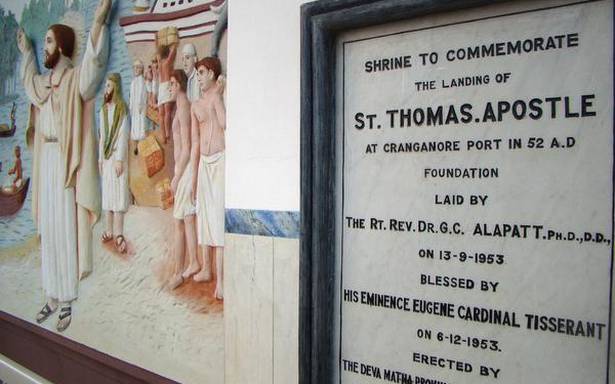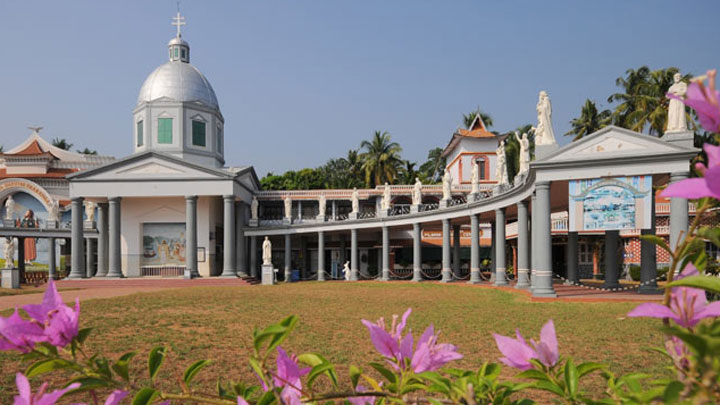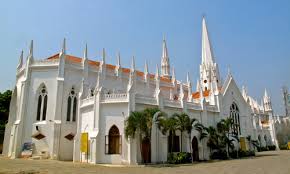“Why is Plum Cake called Plum Cake?”
My children throw yet another one of those seemingly mundane, yet irritatingly complicated questions at me.
Clearly – it is not as simple as it looks. For Plum Cake has no Plums!

Plum Cakes made during Christmas have no plums at all!
There are raisins and currants and rum maybe – but no plums at all!
So what’s the catch?
With a quest to get to the bottom of the plum puzzle, I start off ambling down the annals of Christianity and Christmas celebrations in India. And as always, we learn and discover much.
Plum Quest
Popular belief has it that Christianity came into India with the British. Or at best with the other colonizers (Portuguese, Dutch, French) who came to India since the 15th century AD. That couldn’t be further from the truth.

The winds of Christianity blew into India from the coast of Kerala. And it is one of the most interesting places for a history buff to be. For Kerala is a melting pot like no other.
India’s Melting Pot
It is a well-known fact that spice merchants and travellers from all over the world visited Kerala in the pre-Christian era.
One of the many who made their way to Kerala was St Thomas, one of the 12 Apostles of Jesus Christ, who is believed to have visited the Malabar Coast in A.D. 52.
He arrived in Kodungallur ( Anglicised name is Craganore), a little town in northern Kerala and began to preach the gospel to the people living there.

Contrary to popular belief that Christianity came to India through the colonizers, it was one of Jesus’ apostles himself who brought the faith to this land.
Legend has it that St Thomas performed miracles by suspending water in midair as a testimony of his faith. Many converted to Christianity under St Thomas. These converts are referred to as Syrian Christians. There are 7 churches in Kerala that claim to have been constructed during the time of St Thomas.

St Thomas Church in Craganore is one of the oldest churches in India
These early Christians of Kerala, referred to as Syrian Christians, were earlier referred to as Nazaranis – or the followers of the Jesus of Nazareth.
They followed the Eastern Nestorian faith (as opposed to Christianity as followed by the Roman Catholic Church).

Somewhere along the way a Syrian merchant named Thomas is said to have arrived in Muziris with 400 Syrians, including several priests. These people were welcomed in Malabar by both the rulers as also the ordinary people. They settled in Malabar and mixed with the local population. The community that has descended from this group is called Syrian Christian.

St Thome Cathedral in Chennai is one of the only 3 churches in the world where one of the apostles of Jesus is buried.
For centuries, Christians lived in peace in Kerala side by side with Hindus Muslims, Jews and Jains. The coming of Vasco da Gama in 1498 changed all that.
The Catholic Portuguese were horrified to find the Indian version of Christianity and proclaimed the Indian Christians to be heretics ( although they were some of the earliest Christians of the world). There were various disputes between the two factions and a truce was reached at Udayampur near Kochi in 1599.
But the Portuguese were not easy partners to have in an alliance. Thy were brutal and abused the hospitality of the Indians. Finally in 1653, the Syrian Christians pledged to part ways with the Latin Church around a cross in Mattancherry.

But of course the Portuguese would not relent. The latinization of Christians continued. And the Midnight mass I witnessed at the famous Santa Cruz Cathedral Bascilica in Kochi ( the first European Church in India) is an extremely latinized ceremony.

Kerala has been one of the world’s best examples of how diverse communities – Christians and Muslims (Kerala also boasts of the oldest living Muslim community in South Asia – for Islam came into Kerala centuries before it came through the mountains passes of the north – and it came in peace), Jews and Hindus can live in peace and harmony. Persecuted Jews too from the world over took shelter in Kochi from the early years of the first millennium AD. 
The Pardesi Synagogue in Kochi is one of the oldest synagogues in India, symbol of the open shores and minds of the people and rulers of Malabar.It was only in 1503 AD, when Vasco da Gama, on his second voyage to India, ordered the Samudri Raja of Calicut to expel all Muslims from his land, that the venom of religious intolerance began to touch this land of great ethnic and religious diversity. The coming of the Portuguese disrupted peace and changed the course of Indian history.
The history of India – infact, the history of the whole world would have been very different had it not been for the spices of India that prompted the voyages of both Columbus and Vasco da Gama – and Calicut, Cochin and many of the other places in Kerala were central to that story. (To read more about how the spices of India changed world history, click here)
Returning to the Plum Cake
After using the Plum Cake as an excuse to take a tour of the History of Christianity in India (phew!) I return to the central question.
So what’s the deal with Plum Cake?
It so happens that the word plum was earlier used for raisins, currants and prunes. Although we don’t call them plums today, the name Plum Cake continues to be used for cakes that are made with these ingredients that were earlier called plum!
These fruit cakes are said to have originated in England – and the English took them to their various colonies. And that appears to be how the Plum Cake came to India!
So while the modern English usage of the word plum has changed, the cake bears an interesting stamp of the past.
May you enjoy your plum cake this Christmas, planning ahead for the New Year, yet spending a few moments to dwell upon the fascinating past.
Merry Christmas!
Manish
December 27, 2018 - 3:49 am ·The thought of why a plum cake was called so never crossed my mind in this made up busy life. History is always fascinating and more so when made so interesting…
Manish
December 27, 2018 - 9:19 am ·The thought of why a plum cake was called so never crossed my mind in this made up busy life. History is always fascinating and more so when made so interesting…
Mallika Ravikumar
December 27, 2018 - 5:29 am ·Yes..it never crossed my mind all these years too. 🙂 Thank you for writing in.
Wes Durke
March 20, 2019 - 10:45 pm ·I besides think thence, perfectly composed post! .
Mallika Ravikumar
March 24, 2019 - 6:48 am ·That’s so nice of you. Thank you.